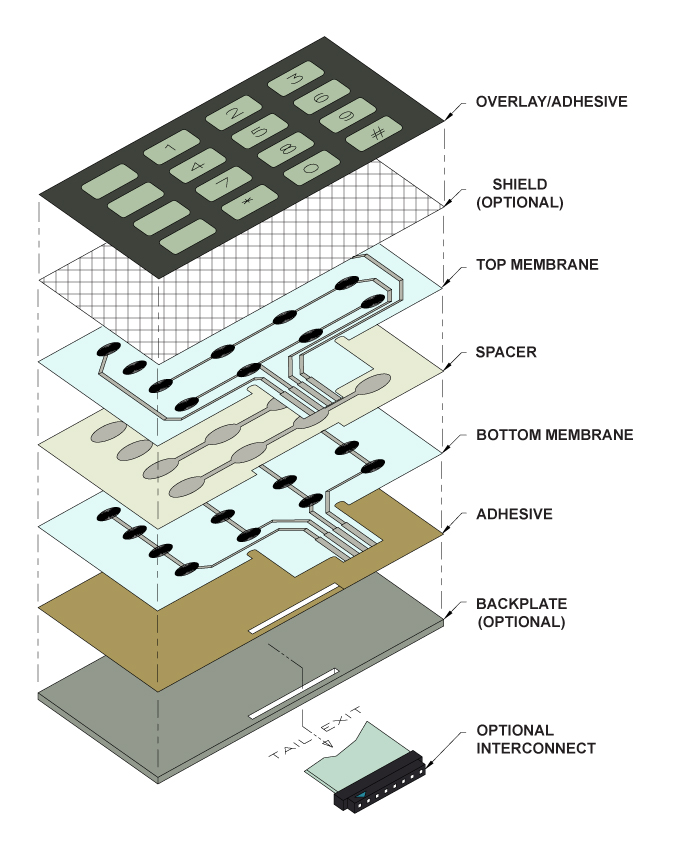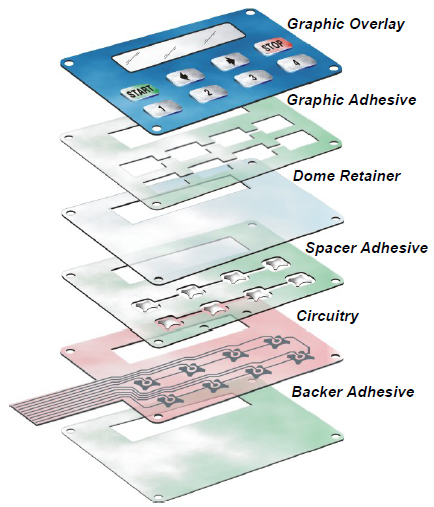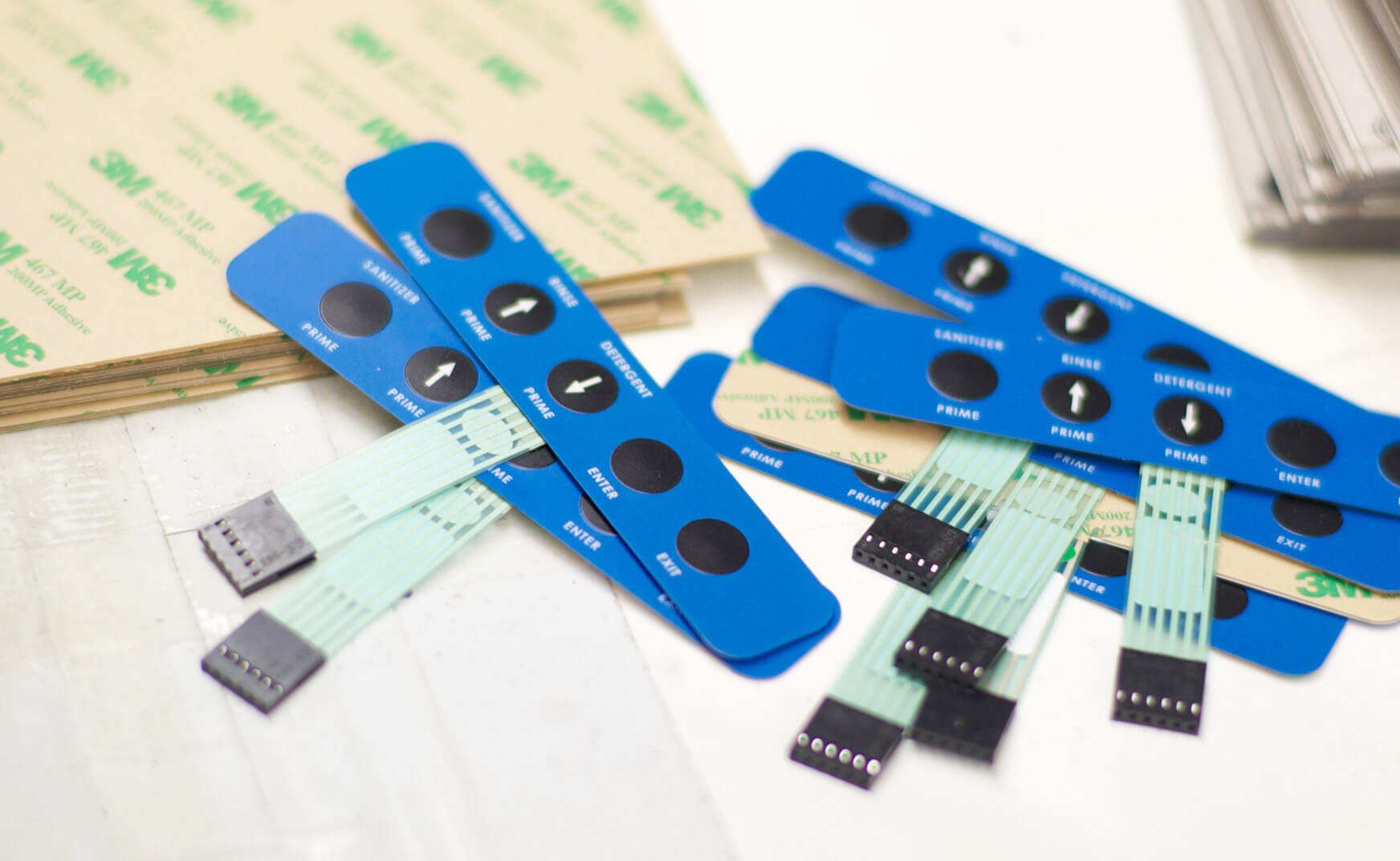Projects requiring precision should always involve a capable membrane switch manufacturer from the start.
Projects requiring precision should always involve a capable membrane switch manufacturer from the start.
Blog Article
Everything About Membrane Layer Switch Over: Understanding Its Style and Capability
When you think of the control user interfaces in modern-day gadgets, membrane layer switches typically come to mind. These elements are more than just buttons; they mix layout and functionality seamlessly. Recognizing exactly how they work and what makes them effective can change your point of view on day-to-day electronics. There are nuances to their design and performance that you might not be conscious of. Let's discover what sets membrane layer changes aside from various other control systems.
What Are Membrane Layer Buttons?

Their smooth nature makes them very easy to clean and resistant to dirt and wetness, a vital function in lots of atmospheres. Membrane layer switches can likewise be personalized regarding form, size, and graphics, permitting manufacturers to develop special user interfaces tailored to certain products. And also, they're light-weight and slim, which helps in lessening the overall mass of tools. In general, membrane layer switches play a substantial role in improving customer experience across a vast array of applications.
Just How Membrane Switches Over Job
When you push a trick on a membrane layer button, it triggers a straightforward yet efficient mechanism. The top layer, commonly made from versatile material, presses down onto a conductive layer underneath it. This activity bridges the gap in between conductive traces, finishing an electric circuit. As quickly as the circuit shuts, it sends a signal to the tool's controller, which interprets your input.
You'll discover that the responsive responses differs based on the button style, offering either a soft click or a more noticable reaction. When you release the trick, the membrane returns to its initial placement, reopening the circuit and quiting the signal. This procedure occurs practically instantaneously, ensuring a receptive individual experience.
Membrane switches are preferred due to their longevity and resistance to dirt and dampness, making them suitable for numerous applications, from household appliances to medical tools. Comprehending this operation aids you appreciate their prevalent use.
Trick Elements of Membrane Layer Buttons
Comprehending the key elements of membrane layer switches is essential for comprehending their capability and layout. The safety layer guards versus ecological aspects and use, prolonging the switch's life expectancy. By recognizing these elements, you'll get understanding into exactly how membrane layer switches run and their significance in different applications.
Materials Made Use Of in Membrane Switch Over Design
The performance and longevity of membrane layer switches heavily depend on the materials made use of in their design. You typically experience polyester and polycarbonate as key substratums as a result of their superb stamina and flexibility. These materials withstand scrapes and chemicals, making them excellent for requiring settings.
The conductive layers frequently make use of silver or carbon, chosen for their integrity and conductivity. membrane switch manufacturer. Silver offers premium efficiency, while carbon is a cost-efficient alternative. For the overlay, you may think about a matte or glossy surface, depending upon your aesthetic needs and user experience
Make specific to select adhesives that hold up against ecological variables like temperature and moisture. Picking the right materials will certainly ensure your membrane switch stands the test of time.
Design Considerations for Membrane Buttons
While designing membrane layer switches, it's essential to take right into account numerous factors that affect their capability and individual experience. Begin by concentrating on the layout and switch size; make specific they're user-friendly and simple to navigate.
Don't ignore the graphic layout; clear labeling and shade comparison are significant for visibility. Validate your layout accommodates ecological variables, like dampness or temperature level variants, which could affect efficiency. Bear in mind the importance of testing prototypes with genuine users to gather responses and make needed adjustments. This iterative process aids you improve the design, validating it satisfies both useful and visual demands properly. By carefully visit this site taking into consideration these aspects, you'll develop a membrane layer switch that enhances use and complete satisfaction.
Applications of Membrane Switches
Membrane layer buttons are versatile parts found in different applications, from commercial tools to consumer electronics. You'll see their effect in devices that need durable interfaces and in gadgets that profit from streamlined styles. Understanding these applications aids you value the functionality and usefulness of membrane switches in daily technology.
Industrial Equipment Usage
When you're looking to boost the performance of industrial tools, membrane layer switches provide a trusted option that incorporates longevity with straightforward layout. These switches are ideal for rough settings, offering resistance to dust, wetness, and chemicals. Embrace membrane layer switches to enhance your procedures and enhance general performance.
Consumer Electronics Integration
In the domain of consumer electronics, membrane layer buttons play an important role in enhancing user interaction and tool functionality. You'll find them in gadgets like microwaves, remotes, and video gaming consoles, providing a seamless method to connect with innovation. Their sleek style enables easy assimilation right click over here now into various products, making controls user-friendly and straightforward. With their ability to integrate graphics and backlighting, you can enjoy a contemporary visual that matches the gadget's overall look. Membrane switches additionally ensure toughness and resistance to dirt and wetness, prolonging the life-span of your electronic devices. By picking membrane layer buttons, you boost not simply the functionality however additionally the style of your devices, making official site daily interactions smooth and enjoyable.
Benefits and Disadvantages of Membrane Switches
While membrane layer buttons use a range of advantages, they additionally feature some drawbacks that you must think about. One substantial benefit is their compact layout, making them perfect for space-constrained applications. They're additionally cost-effective, supplying a durable solution with a low production expense. In addition, their smooth surface is simple to tidy, boosting hygiene in settings like hospitals.

Membrane layer switches can have a shorter life-span contrasted to mechanical switches, particularly under heavy use. They can likewise be less tactile, which may affect user feedback during procedure. Stabilizing these pros and disadvantages will certainly assist you figure out if membrane layer buttons are the appropriate fit for your task.
Regularly Asked Concerns
For How Long Do Membrane Switches Typically Last?
Membrane layer changes normally last in between 5 to ten years, depending upon usage and environmental conditions. You'll want to assess elements like wear, direct exposure to wetness, and temperature changes to determine their long life effectively.
Can Membrane Layer Changes Be Personalized for Details Styles?
Yes, you can customize membrane switches to fit details styles (membrane switch manufacturer). You'll have the freedom to select colors, shapes, and designs that match your job's needs, guaranteeing they mix seamlessly with your overall visual
What Is the Cost Variety for Membrane Layer Switch Manufacturing?
The price range for membrane switch manufacturing generally drops in between $1 and $10 per unit, relying on factors like layout intricacy, amount, and products. You can get quotes from suppliers to find the very best alternative.

Are Membrane Changes Water Resistant or Resistant?
Membrane layer buttons can be created to be water resistant or resistant, relying on materials utilized and building methods. If you need them for wet environments, ensure you specify those requirements during the style procedure.
Exactly How Do Membrane Layer Switches Compare to Standard Switches?
Membrane layer buttons are typically thinner and a lot more versatile than standard switches, providing a streamlined design. They're commonly much easier to clean and incorporate, yet could not give the responsive comments you're made use of to with mechanical alternatives.
Final thought

Report this page